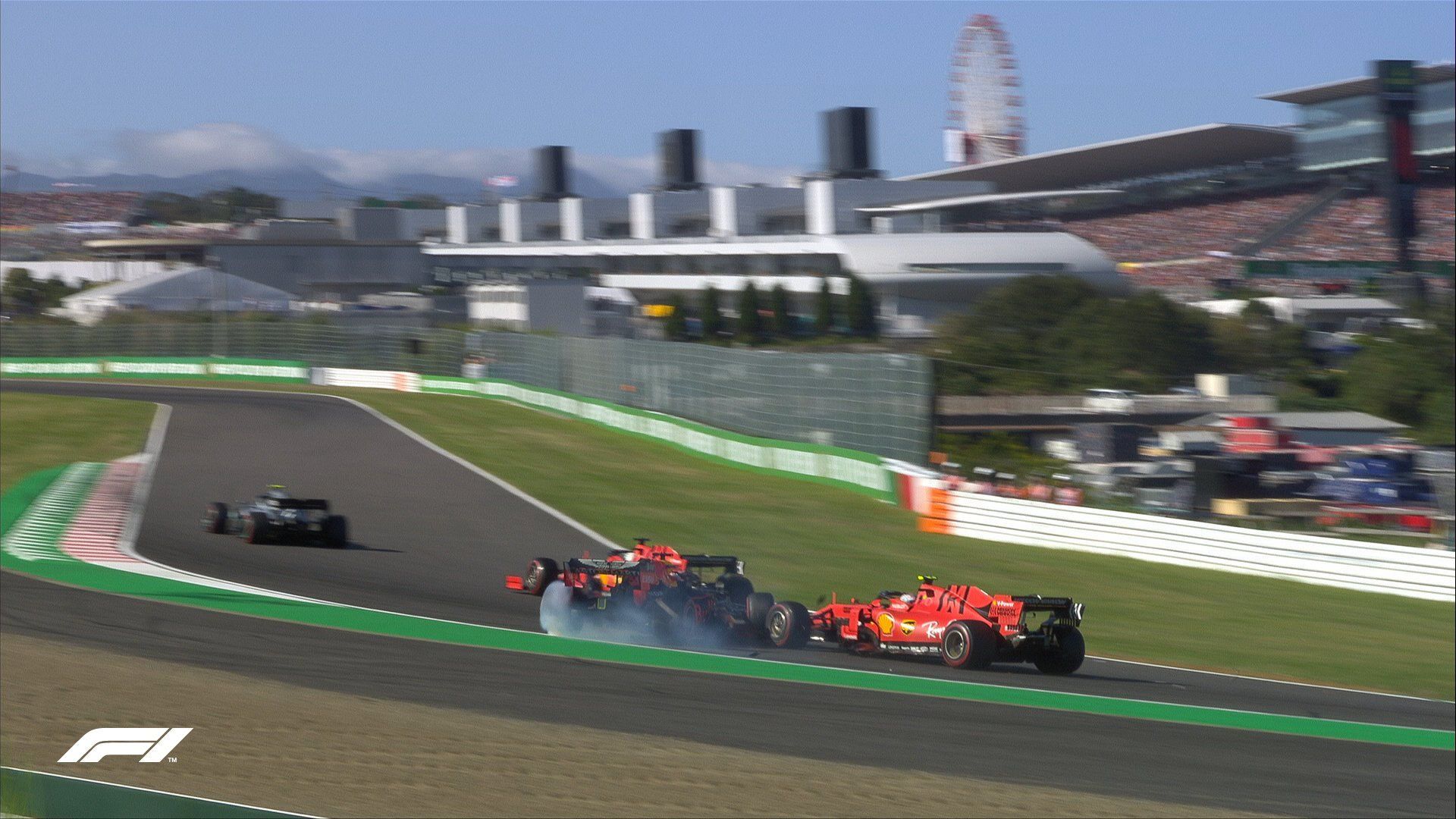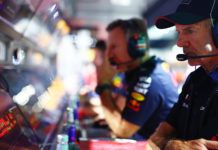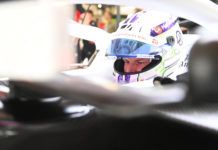The FIA stewards have handed time penalties to Ferrari’s Charles Leclerc of his clash with Red Bull Racing’s Max Verstappen and ignoring pit call in F1 Japanese GP.
Ferrari’s bright Sunday turned sour by the end of it with both drivers suffering in the F1 Japanese GP at Suzuka. Sebastian Vettel had a slow start from pole which allowed Mercedes’ Valtteri Bottas to get in front and eventually win the grand prix.
At the same time, Leclerc collided with Verstappen at Turn 2 as the Dutchman tried a move around the outside and spun. He dropped back but continued for few laps until eventually deciding to retire due to heavy damage on the right side of his car.
The FIA stewards initially termed it as a racing incident but re-opened the case in the race itself. But with Verstappen’s retirement, the case was to be investigated after the grand prix. In addition, Leclerc was also being investigated for ignoring the pit call.
With damage to his front wing, Ferrari called him in quickly to get it changed but the Monegasque continued on as the endplate came off along with the left mirror as it hit the car and Halo of Mercedes’ Lewis Hamilton behind.
The FIA deemed it unsafe and handed Leclerc a 10 seconds time penalty plus fined Ferrari a sum of €25,000 as well. In addition, the Monegasque received a 5 seconds penalty as well for the clash with Verstappen and two penalty points on his superlicense
The 15 seconds added to his time has cost him a place. He now drops to seventh as Renault’s Daniel Ricciardo is promoted to sixth. It seems like, Leclerc would have kept track position, if Ferrari did not pit for the extra point towards the end of the grand prix.
Here’s the FIA statement in full – for unsafe driving and ignoring pit call:
“The Stewards reviewed audio and video evidence, heard from the driver of car 16 (Charles Leclerc), and team representative. Car 16 received front wing damage in an incident on lap 1 at turn 2. The car continued on after the incident and did not pit at the end of lap 1. During lap 2, anticipating a call about the car, the team told the Race Director they were calling the car into the pits at the end of lap 2.
“During lap 2, at turn 11 one section of the front wing detached from the car. Later on that lap, after turn 14 a larger section of front wing detached from car 16 and impacted car 44 which was closely following car 16. This piece of wing narrowly avoided an impact in the area of the cockpit of car 44 and destroyed the right-side mirror of car 44.
“After this second piece detached, the team felt the car was now in a safe condition and despite previously telling the Race Director that the car would be called to the pits, they told car 16 to remain out and not to pit. On lap 3 the Race Director called the team and directed the car be brought to the pits for inspection. Car 16 pitted at the end of lap 3.
“By not bringing car 16 into the pits at the end of lap 1, immediately after the incident for a safety inspection when there was damage clearly visible and then by telling the driver to remain out for an additional lap after telling the Race Director otherwise, the team created an unsafe condition on the circuit which only narrowly avoided being a major incident and also increased the likelihood of additional incidents after the one noted.
“Competitors are reminded that they have the right to appeal certain decisions of the Stewards, in accordance with Article 15 of the FIA International Sporting Code and Article 9.1.1 of the FIA Judicial and Disciplinary Rules, within the applicable time limits.”
The statement regarding incident with Verstappen:
“The Stewards reviewed video evidence, heard from the driver of car 16 (Charles Leclerc), the driver of car 33 (Max Verstappen) and team representatives. Car 16 and car 33 were side by side as they transited turn 1 and approached turn 2 on the first lap, with car 16 on the inside.
“As the cars approached the apex of turn 2, car 33, which was marginally in front, stayed wide and allowed sufficient room to the inside but car 16 lost front grip in the wake of the car in front and abruptly understeered towards the outside of the track, contacting car 33 and forcing it off the track. While the loss of front grip on car 16 caused the contact and was not intentional, that loss of grip in close proximity to the car in front should have been anticipated and allowed for by car 16.
“Car 16 is judged predominantly at fault for the incident. This is a somewhat unusual first lap incident, as only these cars were directly involved, so few of the normal mitigating circumstances exist. Competitors are reminded that they have the right to appeal certain decisions of the Stewards, in accordance with Article 15 of the FIA International Sporting Code and Article 9.1.1 of the FIA Judicial and Disciplinary Rules, within the applicable time limits.”
When asked after the race, Leclerc did not wish to comment much as he wanted to view the incident from outside the car and then see the fault scenario. Verstappen, on the other hand, was quite angry with the Monegasque and put the blame on him.
Apart from the Leclerc and Verstappen incident, the FIA also debated on the clash between Racing Point’s Sergio Perez and Toro Rosso’s Pierre Gasly on the final lap at Turn 2. No driver was adjudged to be wholly blamed and so it was taken as a racing incident.
Staying with Racing Point, the team also lodged a protest against Renault for ‘pre-set lap distance-dependent brake bias adjustment system’, the hearing of which is underway at Suzuka with representatives of both teams with the stewards.
Here’s how the F1 Japanese GP panned out



















